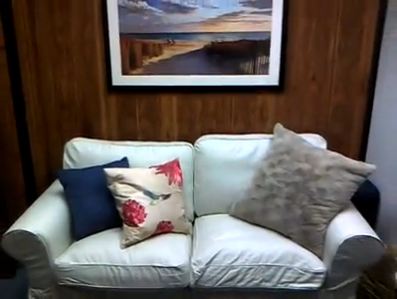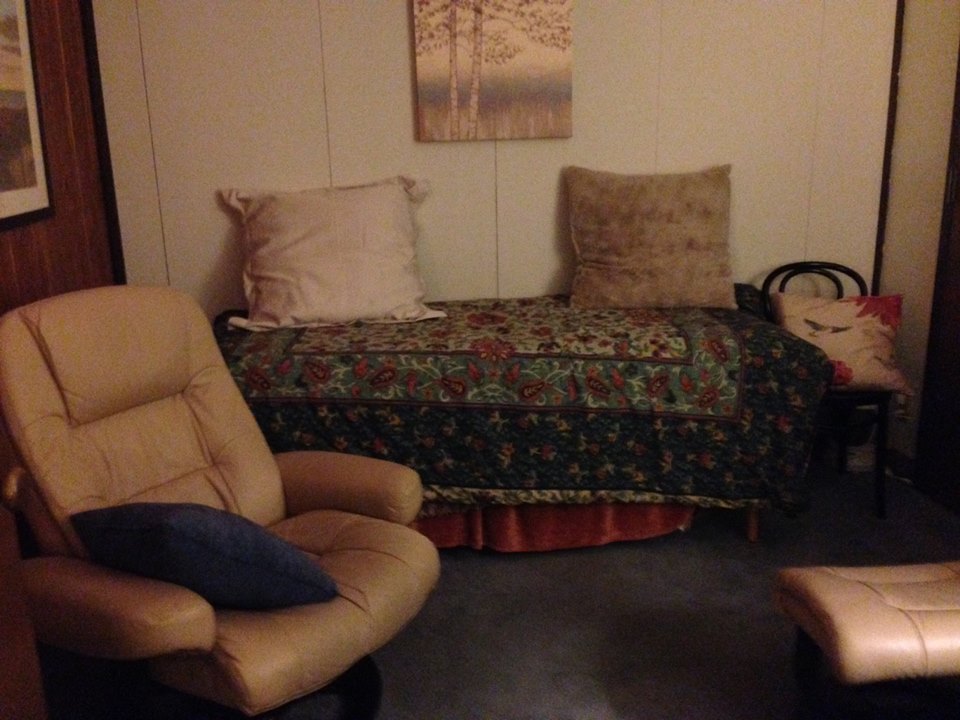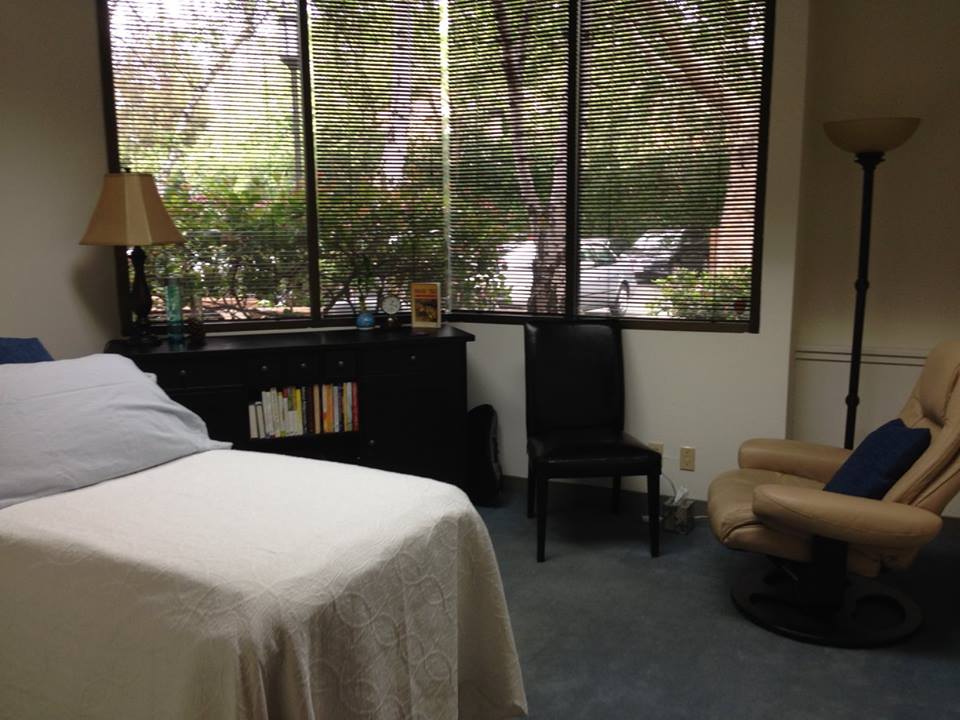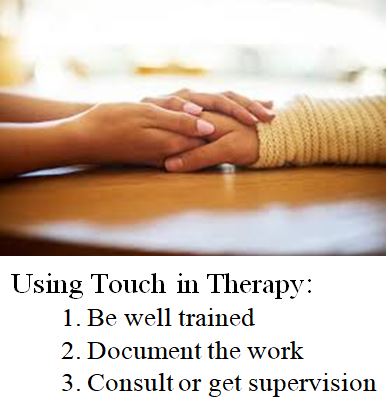This is the story of how I transitioned to my specialty using touch in my therapy practice. It was inspired by many therapists I met at trainings who were hesitant to bring the work we were learning into their practice in part because of long standing taboos against touch. There is a lot of research that points to the healing power of touch, but our profession continues to fear it. This story includes steps I took to make sure I was practicing ethically to protect my client and myself. On September 22, 2018 I will be offering a continuing education course on the ethics of touch in Berkeley, CA so that more practitioners and clients may get access to this powerful work. Learn more.
There is an ancient Indian epic called The Ramayana that is an inspirational story of good overcoming evil. On one level it’s an adventure story. My favorite figure in the story is Hanuman, a half man, half monkey demigod who was cursed as a child to forget his gifts. These gifts were extraordinary – he could make himself very big or very small, he had strength beyond mortal humans, and he could fly. One day while on a quest to find a lost princess, Hanuman and his search party stood by the shore wracking their brains for a solution to how they would get across the sea to an island to see if the princess was hidden there. A dear friend reminded the demigod of his extraordinary talents. He said “Hanuman, use your gifts!” and at that moment, the curse was broken and Hanuman took a great leap across the sea and found the princess.
Every time in my life I face an opportunity to stretch beyond what I think I’m capable of, I remember Hanuman. I can relate to the two sides of his experience – the one who has forgotten and the one who remembers. In a lot of ways, I’m a pretty reserved person. I’ve always considered myself somewhat shy and introverted, but there is this part of me that has Hanuman’s spirit of adventure. This is the spirit that helped me take the leap to become a somatic psychotherapist who uses touch. I want to share my journey with you in hopes of demystifying touch in psychotherapy and helping you feel more empowered to ethically incorporate it into your practice.
How I got started
From my first training in 2008, Somatic Experiencing (SE) has been something of a love story for me, and this is also true for touch training. When I started learning touch in the advanced year, I had several personal sessions and was blown away. I saw how touch was able to circumvent my carefully crafted defenses and connect directly with the underlying physiology in a way that didn’t feel particularly threatening or frightening. I joined Kathy Kain’s Touch Skills Training for Trauma Therapists in 2012 without much thought of how I might apply it; I just knew that’s what I was doing.
My journey was not one giant Hanuman-style leap, but rather a series of them. After I started Kathy Kain’s class, I was filled to the brim with excitement and inspiration. I became eager to dive in, but there were obstacles. First, I didn’t know how I would set up my freshly minted private practice space to accommodate touch in the way I was trained. How would I physically get to them? I had a loveseat and two chairs in a very small room. In my training, we used a massage table. Clients would lay down face up and the practitioner put a hand on their back to contact the kidney-adrenals, their head for the brainstem, or other places to reach the gut, diaphragms and joints. Could I make it work without a table?
Second, I wasn’t sure how I would introduce touch to my clients and whether they would be receptive. I selected a couple of clients I really sensed could use touch. One who was not making much progress with talk alone and another who had been a long-term client who was “game for anything new”. I brought in thick zafu cushions and sat on the floor while my client lay on the sofa.

This is the small sofa that I used when I first started using touch. We made it work, but it took a toll on my body.
I clearly remember the first time I worked with my “game for anything new” client, who I’ll call Theresa. Theresa was a very friendly, holistic-minded person and we had a lot of trust in our relationship. After I explained the concept, I invited her to lie back on the love seat. The arms of the seat were propped with pillows to support her head and under her knees. Once she was settled, I got situated on my cushion and froze. All of my practice sessions had been on a table and in this position I had no idea how to find her kidney. Theresa was none the wiser so I plunged my hand into the general region and had a very freaked out inner dialogue that was hopefully not showing on my face. Theresa’s body was curvy and I didn’t want to start poking her back looking for the bottom of her ribs. I finally asked for help. “I’m aiming for the bottom of your ribs – does this feel right?” Theresa wiggled a bit and said, “Yes, I think so.” Good, I thought, hopefully it didn’t seem out of the ordinary.
Other than the touch and closer proximity, our session went a lot like others we’d had in the past. We chatted, processed, and discussed themes that were challenging her. The only difference was I had my hand on her kidney while we did it. I can’t say there was miracle improvement at first, but Theresa seemed to like it, she didn’t have any adverse symptoms, and we were still doing good therapeutic work. The positive effects from the touch work grew with experience and time.
This is how my practice went for about a year. By the end of that time, more than half of my clients were receiving touch eagerly. I had developed a comfortable description of my use of touch that I told to each new person who came and most of them said, “If you think it will help, I’ll give it a try.” There were two groups of people with whom I had the most success in bringing over to the touch practice: the “game for anything client” and new clients. Other clients who had entered into our therapy relationship with the expectation of a seated practice were harder to interest in something new. It reminded me of my Somatic Experiencing teacher Steve Hoskinson’s emphasis on “initial conditions.” If touch was not part of the initial conditions and agreements of our work together, I only offered it in passing.

In 2015 I put the table in my office and posted about it on Facebook. One colleague said many of her clients didn’t even register the table was there unless she mentioned it. That helped reduce my fear that I would somehow get in trouble for using touch so completely in my practice. The table was much more comfortable for me. I still don’t have a proper chair here.
By the time I completed the Touch Skills class and moved on to the Somatic Resilience and Regulation after Early Trauma (SRR) with Kathy Kain and Steve Terrell, my body was becoming very displeased by my hours in crooked, off-balanced positions on my zafu cushion. I had developed chronic pain in my hips, shoulders and neck. If you are going to integrate touch into your practice, caring for your body is going to have to be a priority. As Kathy Kain said in a training, if you don’t take care of your body, “you’re shortening your career”. After hearing that and experiencing a blissfully painless weekend in class sitting in a nice, comfy chair at an actual table, I knew I needed to make a change. I took my next leap, and it was a biggie.
In order to fit a table into my tiny space, I had to remove the sofa. There would be no more hiding. Any new client would walk in and…table! This was the phase where I started to imagine the pitch forks, torches and angry mob. There were still two chairs, and the clients who didn’t work with touch understood that “I use touch with some people who come here.” To my surprise, things went along pretty much as they had, except I was much more comfortable, my clients’ responses improved – probably in part due to attention shifting from my discomfort to their system – and little by little, more people got curious about being on the table. The table to non-table client ratio continued to shift toward the table.

This is what my office looks like in 2018.
Eventually, the non-touch clients finished their work and the demand for attachment-based psychotherapy with touch was so high that I made the choice not to accept clients unless they were interested in working this way. The last leap was more of a hop. I updated my website to mention touch in the “what I do” section and made sure people were interested in what I was doing before our first session. It’s now been six years and my practice continues to thrive.
Maintaining an Ethical Practice
Even though the angry mob I originally feared never materialized, I did a lot of thinking about how to make sure I was practicing ethically. My training at John F. Kennedy University supplied three guiding principles, which I made sure to review and incorporate in my evolving practice: Be well trained, document the work, and consult with peers and teachers to be sure I’m practicing ethically and appropriately for my scope of practice.

Be Well Trained.
One of the most common things I heard from peers on every step of the journey toward licensure as a Marriage and Family Therapist was, as long as I had training to do something, I could justify using it. Well, not only had I been trained extensively in therapeutic use of touch, I also had years of training as a yoga instructor, where I regularly offered hands-on adjustments, and two levels of Reiki, a hands-on energy method. Training in touch was no problem, but I wanted to cover even more bases.
Technically there is no official standard for ethics in somatic psychology, but I believe the closest thing is the code of ethics by the United States Association for Body Psychotherapy. It is well worth becoming a member of this organization dedicated to supporting somatic psychotherapy. For my required ethics continuing education, I found the wonderful online courses by Ofer Zur of the Zur Institute on the ethics of touch. I think these courses were really valuable for understanding touch taboos both in a cultural context and in psychotherapy. They also addressed the specific rules about touch in each of the fields of clinical practice, and discussed things like boundaries, transference/counter transference, and dual relationships in the context of a practice with touch.
Since taking these courses, I have continued to dive further into the study of the ethics of touch and am currently creating my own course. The six hour course will cover things like risk management – when someone does come up for review with a board, what kinds of practices cause concern. It will be process oriented to help people gain awareness of how their presence impacts the clients and the assumptions we have based on our culture, race and gender. (sign up here to get notified about the course.)
It’s important. When I touch someone in a session, there is never casual touch. I know why I’m touching someone and am mindful at all times about the connection. There are times it may appear casual, like when I put my hand on someone’s arm when they’re on the table. In actuality, I always have a purpose, a sense about how a client might receive the touch and how it might impact their nervous system. You can’t practice ethically without this awareness – it doesn’t mean you’ll get it right 100% of the time, but the awareness, willingness to talk about it with your clients and make repairs are necessary for clients to feel safe and to heal.
Document the Work.
My Ethics and the Law teacher at JFK, Sue Ellen Wise, drilled in the mantras “document, document, document” and “consult, consult, consult”. If you’re a licensed clinician, chances are you’ve already figured out what documentation works best for you without the touch component involved, but as you integrate touch, it’s something you’ll want to revisit.
If a board or insurance reviewer were looking at your notes, they want to ensure that your interventions fall within the standard of care for your profession. Ofer Zur (2007) says we can demonstrate compliance with the standard of care by including these specific elements in your notes: diagnostic impression, initial assessment of mental status, details of the presenting problem, relevant biographical background information, treatment planning, including rationale for treatment, progress notes, termination notes, and documentation of consultation.
According to Zur (2007), when you document touch work in your notes, you want to be able to articulate the clinical rationale for your choice of therapy and demonstrate awareness and consideration of different therapeutic options. I draw from many modalities in my work and always name widely accepted interventions in my notes to show the breadth of treatment that I am applying.
Consult an Expert.
The confidence I have gained has been hard won. At first every day felt like a Hanuman leap, but I had enough faith in what I had learned to keep going. In the beginning I used to say to clients, “we’ll see what happens,” with a tone that wasn’t sure and made no promises. My mentor Steve Terrell helped break me of that.
I started getting consultations with Steve back in early 2013 when I needed them for my Touch Skills Training certificate. I found them so helpful that I kept going and ended up doing twice a month and eventually weekly. It’s not that common for a licensed person to get weekly consultation, especially paid consultation; mostly it’s reserved for urgent circumstances. I have found it to be one of the greatest factors in my success to date and worth every penny.
In the beginning the content of our consults centered around the mechanics of touch. He’d tell me to go try something and I’d do it. Usually it worked, but when it didn’t I’d come back and say something like, “maybe I did it wrong, the client didn’t feel anything.” He would tell me to go back and do it again. “It just means you have to keep doing it!” he’d say. “Stop focusing on what they feel. What did you feel? What else did you notice?” When a client came in and reported change, I’d tell Steve and he would whoop in celebration. Having Steve at my back made it seem less like feeling my way in the dark and as time went on, I saw more and more clients make dramatic change. Theresa became more and more grounded and eventually found a great relationship and got married. It was no longer a leap of faith to tell them things were going to shift in time – they do with almost everyone, and fairly quickly.
Before I could get too comfortable, Steve suggested I work with children. I protested, which I knew was futile, and sure enough, parents started calling. It was a huge leap that felt different with each new child and parent who walked through the door, and not one I wanted to take on my own. My consults moved to a new phase of figuring out how to do touch with kids who were not always willing to lie on the table and more importantly, how to help them advance through developmental phases and coach their parents to support the healing. Without consultation, I would’ve felt way out of my depth, but having weekly guidance to support kids and parents helped me understand important nuances for working successfully and safely.
The last thing I’ll say in favor of consultation is the opportunity to work on the aspect of counter transference. Steve was excellent at helping with the personal activation that came up and helping me figure out the origin. We also talked about body sensations that I was picking up from clients more and more frequently and how to avoid taking other people’s energy home with me. I strongly believe in the concept that therapists can only take clients as far as they have gone themselves.
If you want a less costly option, another great way to consult is to meet regularly with a peer consultation group. Meeting with a specific group on a regular basis is a great way to get support around questions that come up and connect with other clinicians using touch. A few months ago I formed a private Facebook group for students of Kathy Kain and Steve Terrell’s touch work and it has become a wonderful and lively resource. While I don’t believe it is a substitute for consultation, it is a place where articles are shared, theoretical questions are debated and case questions with identifiers carefully removed can be posed. It is a wonderful way for practitioners to feel connected to others who are steeped in using touch in their practice; to share successes and offer resources.
Through the combination of touch, Somatic Experiencing and attachment oriented psychotherapy, I have found my gift, my mission and livelihood. When I started my fledgling practice in 2011, I was seeing about six clients per week. Now my practice is full and thriving. If you have taken the training but have been hesitant or not sure how to start, I’m here to encourage you. While there are not many of us, you are not alone. It is possible to build a successful specialty in somatic touch. This work is powerful and clients are waiting for you. Start slow. Practice. Get support. Take the leap.
Learn more about Brandy’s upcoming course, The Ethics of Touch in Psychotherapy in Berkeley, CA on September 22.
About Brandy
References
USABP Code of Ethics. United States Association for Body Psychotherapy. Retrieved February 10, 2018, from http://usabp.org/about-us/usabp-code-of-ethics/
Zur, O. (2007). Touch in Therapy and the Standard of Care in Psychotherapy and Counseling: Bringing Clarity to Illusive Relationships. United States Association of Body Psychotherapy Journal,6(2), 61-97. Retrieved March 12, 2018, from http://www.zurinstitute.com/touch_standardofcare.pdf




Thank you for taking all those leaps, Brandy, and for sharing your journey.
Thanks Ms. Cathy <3
Thank you Brandy for holding of our hands and walking us through the early phases and stages of appling touch into our practice. You are an inspiration to the work.
Thanks Amanda – That was exactly my intention. I so want this work to be more accessible.
Fantastic article Brandy! I agree, many Pearls of Wisdom. Thanks for sharing your personal experience! There are good examples I can apply in my life. Wishing you the best in your practice 🙂
Glad it was useful, Margaret! Hope all is well with you and your practice.
So many fabulous pearls in this article. Thank you!
Thanks Raquel 🙂